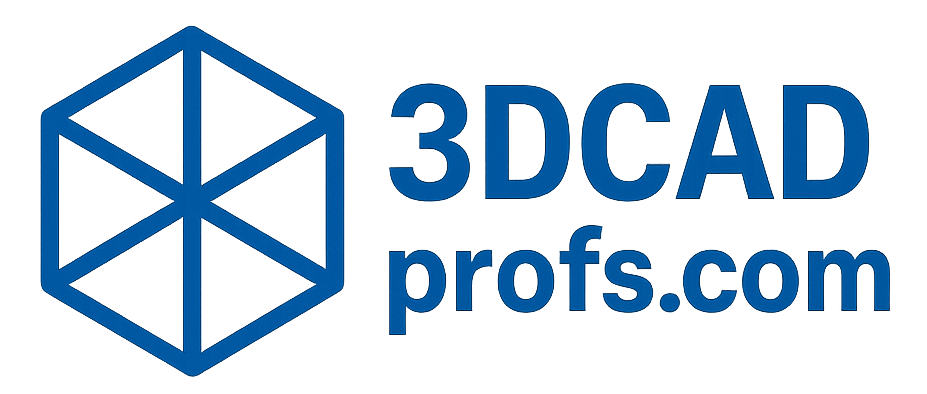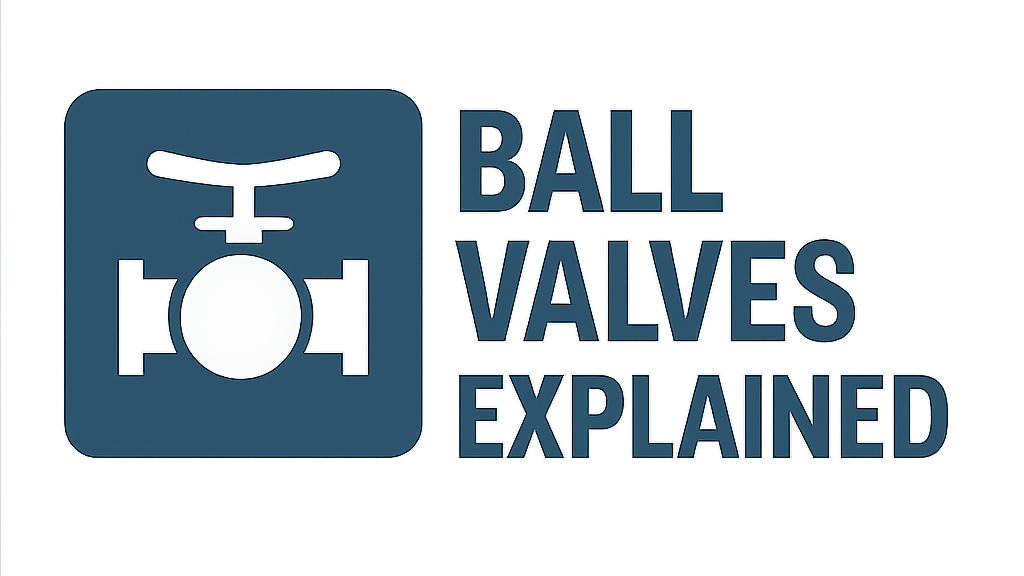Ball Valves Explained
A Comprehensive Guide to Design, Types, and Applications
Introduction to Ball Valves
Ball valves are a type of quarter-turn valve which use a hollow, pivoting, and perforated ball to control flow through it. They are prized for their durability, excellent shutoff capabilities, and ease of operation, making them one of the most common valve types in a wide range of industrial, commercial, and residential applications. This infographic explores the fundamentals of ball valves, from their working principle to selection criteria.
Working Principle: Simple & Effective
The operation of a ball valve is straightforward:
- Quarter-Turn Operation: A 90-degree turn of the handle or actuator rotates the ball.
- Port Alignment:
- When the ball’s hole (port) is in line with the flow, the valve is OPEN, allowing fluid to pass.
- When the ball is rotated 90 degrees so the hole is perpendicular to the flow path, the valve is CLOSED, blocking the flow.
- Sealing: Soft seats (e.g., PTFE, PEEK) or metal seats press against the ball to create a tight seal in the closed position.
This quick action makes them ideal for on/off applications, though some specialized ball valves (V-port) can be used for throttling.
OPEN
CLOSED
Key Components of a Ball Valve
Valve Body
The main pressure-containing structure that houses all internal parts and connects to the pipeline.
Ball
A spherical closure element with a bore (port) through its center. Rotates to control flow.
Stem
Connects the actuator/handle to the ball, transmitting the rotational force to open or close the valve.
Seats
Rings that create a seal between the ball and the valve body. Made from resilient materials (soft seats) or metal (metal seats).
Stem Packing
Seals around the stem to prevent leakage to the atmosphere. Usually made of materials like PTFE or graphite.
Actuator/Handle
The mechanism used to operate the valve, e.g., a manual lever, gear operator, or a pneumatic/electric actuator.
Main Types of Ball Valves
Based on Port (Bore) Size:
Based on Body Construction:
Based on Ball Design:
Actuation Methods
Ball valves can be operated in various ways:
Manual (Lever/Gear)
Simple lever for smaller valves, gear operator for larger valves to reduce operating effort.
Pneumatic
Uses compressed air to drive an actuator (piston or diaphragm type). Fast acting.
Electric
Uses an electric motor and gearbox. Good for remote control and precise positioning.
Hydraulic
Uses hydraulic fluid pressure. Provides high torque for very large or high-pressure valves.
Common Actuation Methods Usage (Illustrative)
Advantages & Disadvantages
Advantages
- Quick quarter-turn on-off operation.
- Tight sealing with low torque.
- Compact and lightweight compared to other valve types.
- Cost-effective and low maintenance.
- Wide range of materials for diverse applications.
- Good durability and long service life.
- Can handle slurries and liquids with solids (depending on design).
Disadvantages
- Poor throttling characteristics for standard port valves (V-port improves this).
- Susceptible to cavitation in some high-velocity liquid applications.
- Soft seats can be damaged by abrasive particles or high temperatures.
- Not ideal for highly viscous fluids that can clog the ball cavity.
- Rapid closing can cause water hammer in liquid lines.
Common Materials of Construction
Valve Body
- Brass, Bronze
- Carbon Steel (e.g., ASTM A216 WCB, A105)
- Stainless Steel (e.g., ASTM A351 CF8M/316, CF8/304)
- Alloy Steels (e.g., Chrome Moly)
- Plastics (PVC, CPVC, PP, PVDF)
Ball
- Stainless Steel (most common)
- Chrome-plated Carbon Steel
- Alloy 20, Hastelloy, Monel
- Ceramic
- Plastics (for plastic valves)
Seats
- PTFE (Teflon®) – common, wide chemical resistance
- Reinforced PTFE (RPTFE) – for higher pressures/temperatures
- PEEK – for high temperature/pressure, abrasive service
- Delrin®, Nylon
- Metal (e.g., Stellite overlay) – for severe service
Typical Applications
Ball valves are used extensively across numerous industries:
Key Selection Considerations
- Fluid Properties: Type of fluid (liquid, gas, slurry), corrosiveness, viscosity, presence of solids.
- Pressure & Temperature: Operating and design conditions. Determines material and pressure class.
- Flow Rate & Cv: Required flow capacity and acceptable pressure drop.
- Shutoff Class: Required tightness of seal (e.g., ANSI/FCI 70-2 Class VI for bubble-tight).
- End Connections: Threaded, socket weld, butt weld, flanged.
- Materials of Construction: Compatibility with fluid and environment.
- Actuation Method: Manual or automated, speed of operation.
- Industry Standards & Certifications: API, ASME, ISO, NACE requirements.
- Maintenance Requirements: Ease of repair, availability of spare parts.
- Cost: Initial purchase cost vs. total cost of ownership.
The Versatile Flow Controller
Ball valves are a remarkably versatile and reliable solution for flow control in a multitude of applications. Their simple yet effective design, combined with a wide array of types, materials, and actuation methods, ensures their continued prominence in piping systems globally. Understanding their characteristics and proper selection is key to ensuring efficient and safe system operation.

